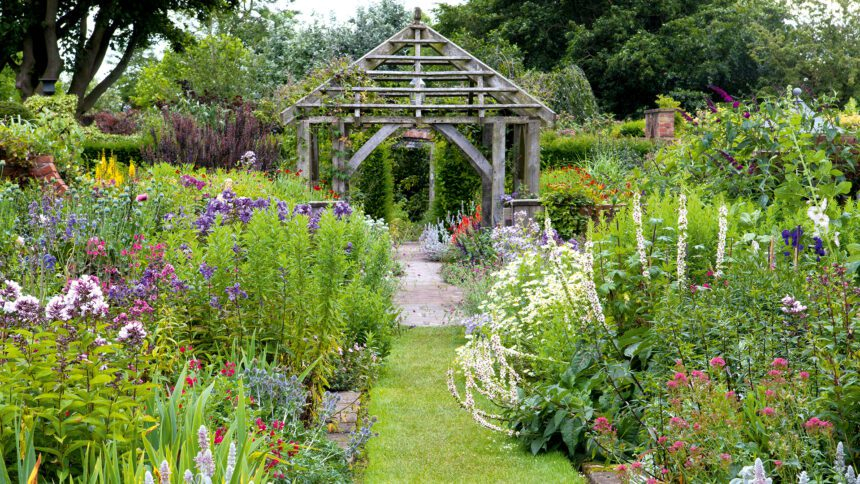Creating a stunning garden requires more than just planting a few flowers. It involves meticulous planning and thoughtful design to ensure your outdoor space is not only visually appealing but also functional for your needs. In this comprehensive guide, we’ll explore the essential tips and tools you need to design a garden that will be the envy of your neighborhood.
Understanding Your Space
Before diving into the design process, take the time to assess your outdoor space. Consider factors such as sunlight exposure, soil quality, and existing features like trees or structures. Understanding these elements will help you make informed decisions during the planning phase.
Analyzing Sunlight Exposure
Maximizing sunlight exposure is crucial for the health of your plants. Identify which areas of your garden receive the most sunlight throughout the day, as well as any spots that may be shaded by trees or buildings. This information will guide your plant selection and placement.
Assessing Soil Quality
Healthy soil is the foundation of a thriving garden. Test your soil to determine its pH level and nutrient content. Based on the results, you can amend the soil as needed to create an optimal growing environment for your plants.
Designing Your Garden Layout
Once you have a clear understanding of your space, it’s time to start designing your garden layout. Consider both aesthetic and practical elements to create a plan that suits your vision and lifestyle.
Creating Focal Points
Focal points serve as visual anchors in your garden, drawing the eye and adding interest to the space. Whether it’s a striking sculpture, a water feature, or a colorful flower bed, incorporate focal points strategically throughout your garden to create balance and harmony.
Planning Pathways and Borders
Well-defined pathways not only add structure to your garden but also make it more accessible. Determine the best locations for pathways, taking into account traffic flow and sightlines. Borders, such as hedges or flower beds, can also help define different areas within your garden.
Selecting Plants and Flowers
Choosing the right plants and flowers is essential for achieving the desired look and feel of your garden. Consider factors such as color, texture, and maintenance requirements when making your selections.
Incorporating Native Plants
Native plants are well-adapted to your local climate and soil conditions, making them easier to care for and more resilient against pests and diseases. Plus, they provide valuable habitat for native wildlife. Research native plant species that thrive in your area and incorporate them into your garden design.
Creating Seasonal Interest
To ensure year-round enjoyment of your garden, select plants that offer seasonal interest. Choose a mix of flowering plants, evergreens, and foliage plants to provide color and texture throughout the year. Additionally, consider planting bulbs for spring blooms and ornamental grasses for fall interest.
Maintaining Your Garden
Once your garden is established, proper maintenance is key to keeping it looking its best. Develop a regular maintenance routine to ensure your plants stay healthy and your garden remains beautiful throughout the seasons.
Watering and Fertilizing
Consistent watering is essential, especially during the hot summer months. Use a soaker hose or drip irrigation system to deliver water directly to the root zone, minimizing evaporation and water waste. Additionally, fertilize your plants regularly to provide them with the nutrients they need to thrive.
Pruning and Weeding
Regular pruning helps promote healthy growth and shape your plants for optimal aesthetics. Remove dead or diseased branches, as well as any overgrown or crossing stems. Likewise, stay on top of weeds by pulling them regularly to prevent them from competing with your plants for resources.
Frequently Asked Questions (FAQs)
Q: How can I create a garden that attracts pollinators?
A: To attract pollinators such as bees and butterflies, incorporate a variety of flowering plants that provide nectar and pollen throughout the growing season. Avoid using pesticides, as they can harm pollinators.
Q: What tools do I need to maintain my garden?
A: Essential gardening tools include a trowel, pruners, a shovel, a rake, and a watering can or hose. Invest in high-quality tools that are comfortable to use and built to last.
Q: How do I prevent pests and diseases in my garden?
A: Practice good garden hygiene by keeping your plants healthy and removing any debris or dead plant material. Monitor your garden regularly for signs of pests or diseases, and address any issues promptly to prevent them from spreading.
Q: Can I grow vegetables in my garden?
A: Absolutely! Many vegetables thrive in home garden settings, including tomatoes, peppers, lettuce, and carrots. Choose varieties that suit your climate and growing conditions, and be sure to provide adequate sunlight and water.
Q: How do I design a low-maintenance garden?
A: Opt for low-maintenance plants that require minimal pruning, watering, and fertilizing. Incorporate mulch to suppress weeds and retain moisture in the soil, and consider using drought-tolerant plants that can withstand periods of dry weather.
Q: What are some budget-friendly landscaping ideas?
A: To save money on landscaping, consider starting small and gradually expanding your garden over time. Look for affordable plants at local nurseries or plant swaps, and repurpose materials such as rocks or salvaged wood for hardscape features.
Conclusion
Designing a beautiful and functional garden is a rewarding endeavor that enhances your outdoor living space and connects you with nature. By following the tips and utilizing the tools outlined in this guide, you’ll be well on your way to creating a garden that brings joy and tranquility for years to come.









